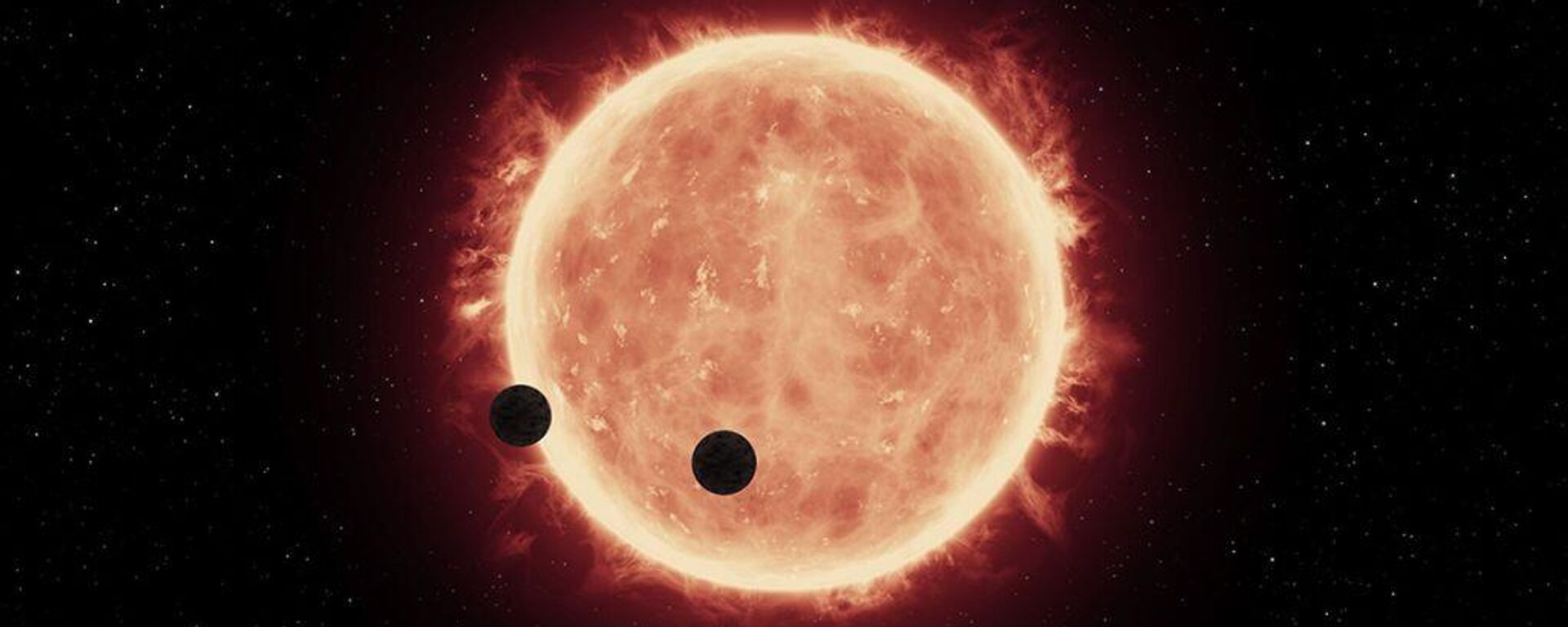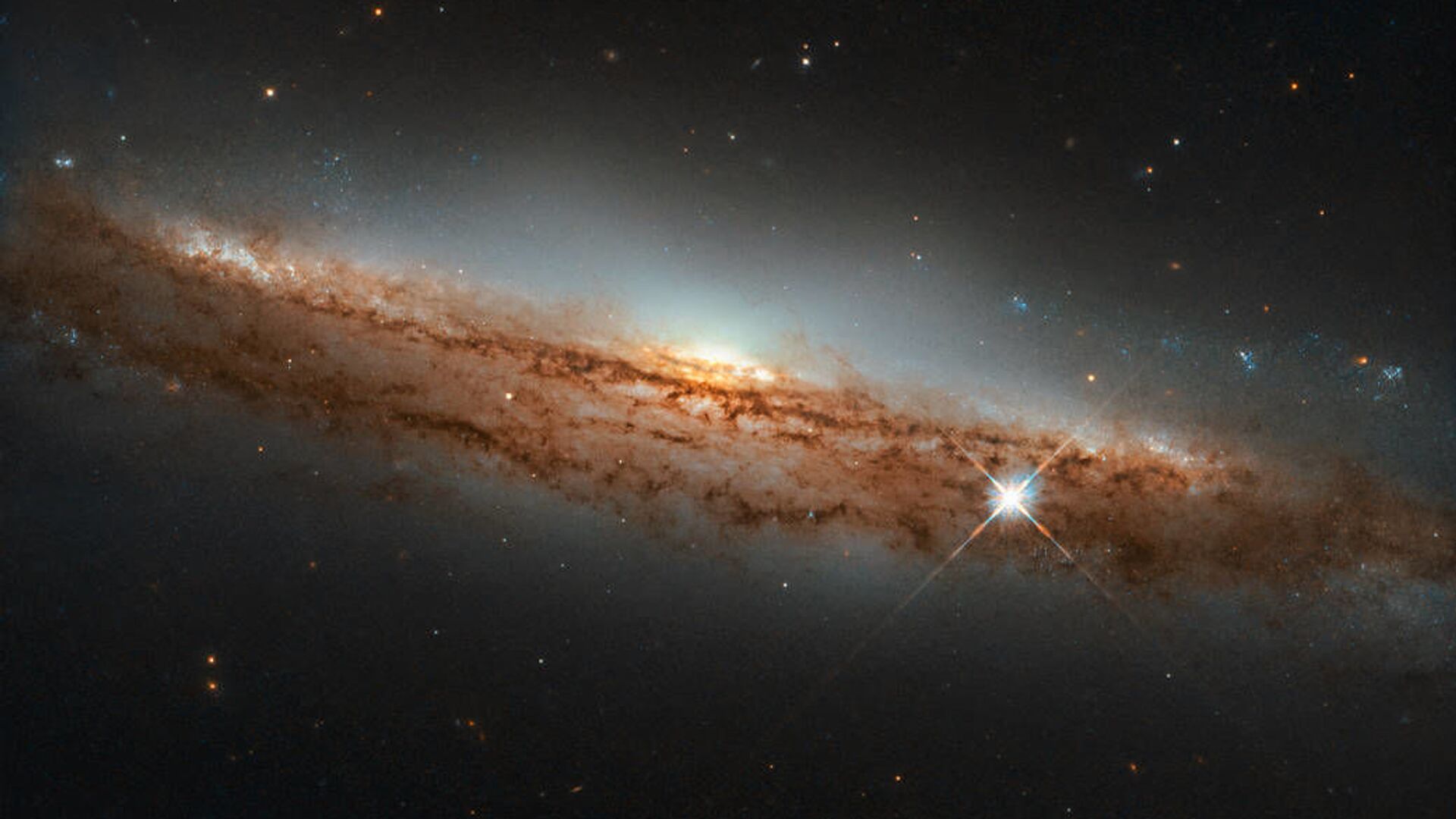https://sputnikglobe.com/20230306/suns-twin-has-planetary-copies-of-jupiter-and-neptune-scientists-say-1108130069.html
Sun's 'Twin' Has Planetary Copies of Jupiter and Neptune, Scientists Say
Sun's 'Twin' Has Planetary Copies of Jupiter and Neptune, Scientists Say
Sputnik International
Planetary scientists have discovered exoplanets in the star HIP 104045, 175 light years from Earth. The system of this star, which is close to the Sun in age and properties, includes at least two gas giants.
2023-03-06T22:54+0000
2023-03-06T22:54+0000
2023-03-07T02:36+0000
science & tech
cosmos
sun
jupiter
neptune
exoplanets
earth
https://cdn1.img.sputnikglobe.com/img/107705/54/1077055417_0:191:1041:777_1920x0_80_0_0_f4ada364f4853121a2a7dda4c2c2e065.jpg
The first of these, HIP 104045 b, weighs about half as much as Jupiter and orbits its star in 6.3 years. The second, HIP 104045 c, is a hot superneptune: it is about 2.5 times the mass of Neptune but moves closer to the star in a 316-day orbit, similar to Earth.Researchers note many similarities between the Sun and HIP 104045. The star is about 4.5 billion years old (the Sun stands at 4.57 billion years) and has almost identical metallicity - a relative concentration of elements heavier than hydrogen and helium. In addition, the mass of HIP 104045 is only 1.03 times that of the Sun and its radius is 1.05 times.Scientists used telescopes at La Silla Observatory in Chile's Atacama Desert to search for exoplanets near the star.The first planet to be discovered was a Jupiter-like planet. Although somewhat smaller than that found in the solar system, this gas giant is also far enough away from the star to protect the interior of the system from asteroids.Planetary scientists note that Jupiter is important for the development of the solar system and probably for the origin of life on Earth. The powerful gravity of this gas giant protects the inner solar system from constant bombardment by small rocks, forming a stable asteroid belt.At the same time, from time to time it ejects small rocks into the inner Solar System. It's speculated the collision of one of these asteroids with the Earth that brought life to the latter.Researchers believe analyzing planetary systems with gas giants with Jupiter-like properties and orbital parameters could help find another system where life could form.But HIP 104045 is unlikely to be suitable: the presence of a hot superneptune inside the orbit of a larger planet makes it less likely an Earth-like planet will form in the habitable zone of the star.The team's research has been submitted to the Monthly Notices of the Royal Astronomical Society, and is available on arXiv preprint service.
https://sputnikglobe.com/20221219/astronomers-find-two-potentially-habitable-exoplanets-1105581194.html
earth
Sputnik International
feedback@sputniknews.com
+74956456601
MIA „Rossiya Segodnya“
2023
News
en_EN
Sputnik International
feedback@sputniknews.com
+74956456601
MIA „Rossiya Segodnya“
Sputnik International
feedback@sputniknews.com
+74956456601
MIA „Rossiya Segodnya“
sun, jupiter, neptune, hip 104045, why does life exist only on earth, are there any other planets with life, exoplanets, habitable exoplanets
sun, jupiter, neptune, hip 104045, why does life exist only on earth, are there any other planets with life, exoplanets, habitable exoplanets
Sun's 'Twin' Has Planetary Copies of Jupiter and Neptune, Scientists Say
22:54 GMT 06.03.2023 (Updated: 02:36 GMT 07.03.2023) Planetary scientists have discovered exoplanets in the star HIP 104045, 175 light-years from Earth. The system of this star, which is close to the Sun in age and properties, includes at least two gas giants.
The first of these, HIP 104045 b, weighs about half as much as Jupiter and orbits its star in 6.3 years. The second, HIP 104045 c, is a hot superneptune: it is about 2.5 times the mass of Neptune but moves closer to the star in a 316-day orbit, similar to Earth.
"Small Earth-sized planets are more common than giant planets. These factors open precedents to the search for Earth-like planets around Sun-like stars by primarily looking for Jupiter-like planets," writes an international team of astronomers led by Thiago Ferreira of the University of Sao Paulo in Brazil.
Researchers note many similarities between the Sun and HIP 104045. The star is about 4.5 billion years old (the Sun stands at 4.57 billion years) and has almost identical metallicity - a relative concentration of elements heavier than hydrogen and helium. In addition, the mass of HIP 104045 is only 1.03 times that of the Sun and its radius is 1.05 times.
Scientists used telescopes at La Silla Observatory in Chile's Atacama Desert to search for exoplanets near the star.

19 December 2022, 13:35 GMT
The first planet to be discovered was a Jupiter-like planet. Although somewhat smaller than that found in the solar system, this gas giant is also far enough away from the star to protect the interior of the system from asteroids.
Planetary scientists note that Jupiter is important for the development of the solar system and probably for the origin of life on Earth. The powerful gravity of this gas giant protects the inner solar system from constant bombardment by small rocks, forming a stable asteroid belt.
"Jupiter analogues form preferentially around stars with metallicities close to solar, and strikingly, potentially habitable low-mass planets could be common around stars that host a cold Jupiter," scientists wrote in their findings.
At the same time, from time to time it ejects small rocks into the inner Solar System. It's speculated the collision of one of these asteroids with the Earth that brought life to the latter.
Researchers believe analyzing planetary systems with gas giants with Jupiter-like properties and orbital parameters could help find another system where life could form.
But HIP 104045 is unlikely to be suitable: the presence of a hot superneptune inside the orbit of a larger planet makes it less likely an Earth-like planet will form in the habitable zone of the star.
The team's research has been submitted to the
Monthly Notices of the Royal Astronomical Society, and is available on
arXiv preprint service.


